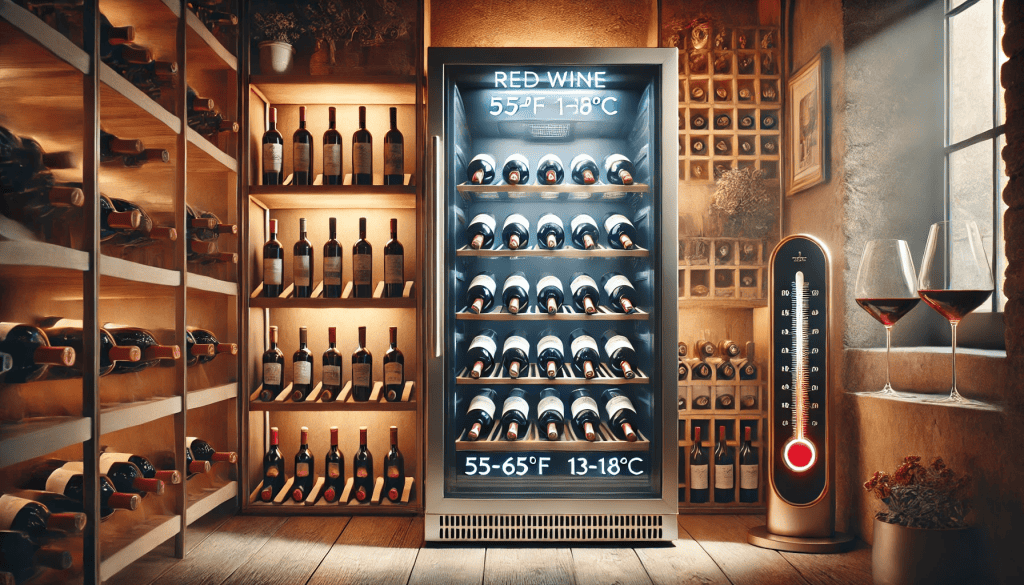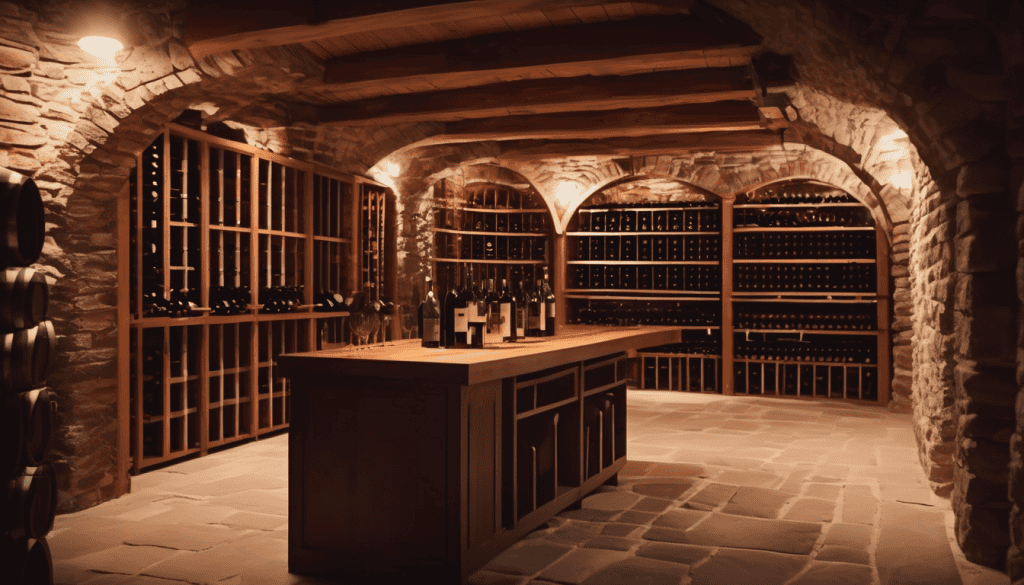All of us who love and enjoy wine are confronted with the question, “What temperature should red wine be stored at?” This topic is close to my heart because I’ve witnessed how improper storage can spoil even the finest bottles. Below, I have put together a summary of useful tips for you on storing red wine correctly. There are a few “basic rules” regarding storing conditions and various ways you can accommodate them, e.g., in a dedicated cellar, a wine cabinet, a wine refrigerator, etc.
Personally, I have been using a multi-temperature zone wine fridge (EuroCave) for many years. It is one of the best solutions for storing wine, and I highly recommend it.
Welcome to Didi Somm and Cheers!
Important Notice: The information in this article is for general and public information purposes only. It solely reflects Didi Somm’s or his Staff’s opinion, and no responsibility can be assumed for errors or omissions in the service’s contents. For details, please check the Disclaimer at the bottom of the homepage.

Main Takeaways
The Importance of Temperature for Red Wine
Temperature is one of the most critical factors in properly storing red wine. The ideal temperature range for red wine is between 55-65°F (13-18°C), which helps preserve the wine’s delicate flavors, aromas, and overall quality.
If red wine is stored at too warm temperatures, it can age prematurely and lose its complexity. It will oxidize more quickly, leading to a flat, stale flavor. Conversely, if the wine is stored at too cold temperatures, it can become dull and muted, with less vibrant flavors.

Consistent Temperature is Key
While the 55-65°F (13-18°C) range is ideal, maintaining a consistent temperature is even more important. Even within this range, short-term/daily fluctuations in temperature can be just as damaging to the wine as storing it at the wrong temperature altogether. They will cause the wine to expand and contract, leading to premature aging and the loss of delicate aromas and flavors.
Long-term fluctuations of a few degrees over several months (e.g., seasonal differences in a natural wine cellar) are not as concerning as daily swings of 5-8°F or more.
Humidity and Wine Storage
In addition to temperature, humidity is also an important factor when it comes to storing red wine. The ideal humidity range for red wine storage is between 50-80%. This helps to prevent the cork from drying out and air entering the bottle, which causes oxidation and premature aging. If the humidity is too high, mold and other issues can damage the wine, too.

Minimizing Exposure to Light and Vibration
Another important factor to consider when storing red wine is exposure to light and vibration. Direct sunlight and bright artificial light can cause the wine to age prematurely and lose its color and flavor.
Vibration from a refrigerator or a busy household can also cause the wine to age more quickly and lose its delicate flavors and aromas.
To minimize these factors, red wine should be stored in a dark, cool, and quiet environment, such as a wine cellar or a wine refrigerator.
The Ideal Wine Storage Environment
The ideal environment for storing red wine is a cool, dark, and humidity-controlled space, such as a dedicated wine cellar, specialized wine refrigerators/wine coolers, or a passive cellar. These cellars rely on natural ground temperatures to maintain the ideal conditions without the need for cooling devices. They are designed to store your wine at a consistent cellar temperature and humidity level and minimize exposure to light and vibration.
In an ideal wine cellar, wine refrigerator, or passive/natural cellar, the temperature should be maintained between 55-65°F (13-18°C), and the humidity should be between 50-80%. The space should also be dark and free from any sources of vibration and direct sunlight. Additionally, the cellar should have air ventilation (artificial or natural).

Storing Red Wine at Home
Even if you don’t have access to a dedicated wine cellar, you can still properly store red wine at home. The key is to find a cool, dark, and quiet space in your home, such as a basement or a little used closet, and ensure it meets the necessary conditions for temperature and humidity to avoid the risks associated with temperature fluctuations, humidity, light exposure, vibration, strong odors, and air ventilation.
Utilizing wine refrigerators/wine coolers is the most practical solution for homeowners looking to maintain the best temperature for serving, short-term storage, and long-term storage of wine. When choosing a wine cooler, consider factors such as unit location, capacity, access to bottles, door type, multiple temperature zones, humidity control, and noise level to ensure it meets your needs.

Wine Fridge Temperature Range
A dedicated wine fridge is an excellent investment for storing red wine. These specialized appliances are designed to maintain the ideal temperature range of 55-65°F (13-18°C), which is crucial for preserving the wine’s delicate flavors and aromas.
Many wine fridges offer dual-zone or even multiple temperature zones, allowing you to store red and white wines at their optimal serving temperatures. They can also accommodate various types and sizes of bottles.

FAQ – What Temperature Should Red Wine Be Stored At
1. What is the ideal temperature range for storing red wine?
The ideal temperature range for storing red wine is between 55-65°F (13-18°C).
2. Is it okay to store red wine in the traditional refrigerator?
The standard refrigerator is typically too cold for long-term red wine storage.
3. Can I store red wine in the freezer?
It is not recommended, as extreme cold can damage the wine.
4. How important is humidity for storing red wine?
Humidity is an important factor. The ideal humidity range is between 50% and 80%.
5. What happens if red wine is stored at too high of a storage temperature?
At a storage temperature that is too high, it can age prematurely and lose its complexity and flavor.
6. What happens if red wine is stored at too low of a temperature?
It can cause the wine’s flavors to become muted and less vibrant.
7. How do I know if my red wine has been stored properly?
Signs that your red wine has been stored properly include a consistent, desirable flavor profile, a clear and vibrant color, and no signs of premature aging or oxidation.
8. Can I store red wine in the garage or attic?
No, the garage or attic is generally not an ideal storage environment for red wine due to the potential for temperature and humidity fluctuations.
9. How long can I store red wine if it’s been properly stored?
It can last for several years, depending on the specific wine and its aging potential.
10. What’s the best way to monitor the temperature and humidity in my wine storage area?
A digital hygrometer and thermometer can help you monitor these levels.
11. Can I store different types of red wine together?
Yes, you can generally store different types of red wine together as long as they are stored at the same temperature and humidity levels.
12. Should I store red wine bottles upright or on their side?
It’s generally recommended that red wine bottles be stored on their sides to keep the cork moist and prevent air from entering the bottle.
13. How often should I check on my stored red wine?
Every few weeks or months, ensure that the temperature and humidity levels are still within the ideal range.
14. Can I store red wine in my kitchen?
The kitchen is generally not an ideal storage location for red wine due to potential temperature and humidity fluctuations.
15. What happens if my red wine is exposed to sunlight or vibration?
Exposure to sunlight or vibration can cause the wine to age prematurely and lose its delicate flavors and aromas.
Conclusion
It’s crucial to store red wine correctly to maintain its quality and allow it to reach its full potential. The recommended temperature for storing red wine is 55-65°F (13-18°C), with consistent temperature being more crucial than hitting an exact number.
Factors like humidity, light, and vibration are vital in storing wine. Adhering to these suggestions and creating the perfect storage conditions for your wine collection will guarantee that your red wines and white wines are preserved in optimal settings, ensuring you can savor their full taste and aroma for many years.
Personal Tip: Please check the following website about Wine Storage.
Whether you have a designated wine cellar or store red wine at home, these guidelines will help you keep your wine in excellent condition.
Enjoy, and Cheers!
For your reference, the latest articles by Didi Somm, include:
- How many Glasses of Wine in a Bottle? 7 Expert Insights for You
- 10 Expert Insights on “How Long Does Wine Last Unopened”
- Wall Wine Rack Ideas – 5 Expert Tips for You
- How Many Calories in a Bottle of Wine? – Find Out Here
- What Wine Goes with Salmon? Discover 11 Expert Tips
- Mini Wine Fridge – Best Selection of up to 18 Bottles
Important Notice: The information in this article is for general and public information purposes only. It solely reflects Didi Somm’s or his Staff’s opinion, and no responsibility can be assumed for errors or omissions in the Service’s contents – for details, please check the Disclaimer at the bottom of the homepage.


